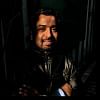
Shamsuddoza Sajen
Shamsuddoza Sajen is a journalist and researcher. He can be contacted at [email protected]
Shamsuddoza Sajen is a journalist and researcher. He can be contacted at [email protected]
Despite the weekly holiday, anti-quota protesters once again blocked the Shahbagh intersection in Dhaka, demanding reforms to the quota system in government jobs and condemning the police action on students the previous day.
On July 11, 2024, the anti-quota movement entered a new phase of confrontation. Ignoring police warnings and ministers’ calls to step back, thousands of protesters defied barricades and took to the streets as part of their “Bangla Blockade.”
July 10, 2024.Protesters refuse to back down.Shamsuddoza Sajen.The protests over the quota system in government jobs showed no signs of slowing down on July 10 as students across the country vowed to continue their movement despite the Supreme Court’s order for a four-week stat
The ongoing Bangla Blockade paused for a day as students leading the quota reform movement prepared for their next round of protests.
For the second consecutive day, the Bangla Blockade grips the capital, with thousands of students and jobseekers bringing traffic to a standstill at key intersections across Dhaka.
Beyond Dhaka, protesters hold the streets with equal resolve
Even on a holiday, the quota reform protests show no sign of slowing. Students across Bangladesh take to the streets, block roads, form human chains, and voice their rejection of the reinstated quota system in government jobs.
Defying the rain, they sat on the streets, waving banners and shouting slogans
Despite the weekly holiday, anti-quota protesters once again blocked the Shahbagh intersection in Dhaka, demanding reforms to the quota system in government jobs and condemning the police action on students the previous day.
On July 11, 2024, the anti-quota movement entered a new phase of confrontation. Ignoring police warnings and ministers’ calls to step back, thousands of protesters defied barricades and took to the streets as part of their “Bangla Blockade.”
July 10, 2024.Protesters refuse to back down.Shamsuddoza Sajen.The protests over the quota system in government jobs showed no signs of slowing down on July 10 as students across the country vowed to continue their movement despite the Supreme Court’s order for a four-week stat
The ongoing Bangla Blockade paused for a day as students leading the quota reform movement prepared for their next round of protests.
For the second consecutive day, the Bangla Blockade grips the capital, with thousands of students and jobseekers bringing traffic to a standstill at key intersections across Dhaka.
Beyond Dhaka, protesters hold the streets with equal resolve
Even on a holiday, the quota reform protests show no sign of slowing. Students across Bangladesh take to the streets, block roads, form human chains, and voice their rejection of the reinstated quota system in government jobs.
Defying the rain, they sat on the streets, waving banners and shouting slogans
The student movement against the reinstatement of the quota system in public service recruitment escalated on July 3, 2024, as demonstrations expanded beyond university campuses to major highways and key city intersections, mounting pressure on the government.
Defying rain, warnings, exhaustion, anti-quota protests gained momentum